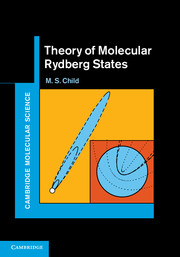Book contents
- Frontmatter
- Contents
- Preface
- 1 Molecular Rydberg states
- 2 The quantum defect picture
- 3 Ab-initio quantum defects
- 4 Frame transformations and channel interactions
- 5 Competitive fragmentation
- 6 Photo-excitation
- 7 Photo-ionization
- 8 Manipulating Rydberg states
- Appendix A MQDT normalization
- Appendix B Alternative MQDT representations
- Appendix C Rotational frame transformations
- Appendix D Optical transition and photo-ionization amplitudes
- Appendix E Generalized MQDT representation
- Appendix F Notation
- Index
- References
7 - Photo-ionization
Published online by Cambridge University Press: 07 October 2011
- Frontmatter
- Contents
- Preface
- 1 Molecular Rydberg states
- 2 The quantum defect picture
- 3 Ab-initio quantum defects
- 4 Frame transformations and channel interactions
- 5 Competitive fragmentation
- 6 Photo-excitation
- 7 Photo-ionization
- 8 Manipulating Rydberg states
- Appendix A MQDT normalization
- Appendix B Alternative MQDT representations
- Appendix C Rotational frame transformations
- Appendix D Optical transition and photo-ionization amplitudes
- Appendix E Generalized MQDT representation
- Appendix F Notation
- Index
- References
Summary
The theory of photo-ionization owes much to the treatment of photo-excitation in the previous chapter, but there are significant differences. Most importantly the species is excited to a final state in which the electron is detached from the positive ion. The necessary boundary conditions resemble those for a scattering event, except that the partial waves are combined to produce outgoing plane wave motion in a particular target channel, instead of an incoming plane wave in the incident scattering channel. Confusingly the former are referred to as ‘incoming’ and the latter as ‘outgoing’ boundary conditions, because the amplitudes and phases are adjusted to ensure only incoming spherical waves in photo-fragmentation and outgoing spherical waves in scattering. Details are given in this chapter for the simple case of a single open ionization channel, leaving the multichannel boundary conditions to be treated in Appendix D.2. It is also shown in Section 7.1 how the spherical tensor machinery in Chapter 6 can be adapted to handle multiphoton ionization.
The theory is presented for a bulk sample with a random distribution of magnetic sub-levels, but the averaging over fragment sub-levels is more awkward than for a final bound state. Further complications come from possible changes in the angular momentum coupling regime between the parent neutral molecule and the resulting positive ion, details of which are covered in Appendix D.2. The following presentation is intended to combine the early results of Buckingham et al. with the formal ‘angular momentum transfer’ theory of Fano and Dill [1, 2, 3].
- Type
- Chapter
- Information
- Theory of Molecular Rydberg States , pp. 191 - 238Publisher: Cambridge University PressPrint publication year: 2011



